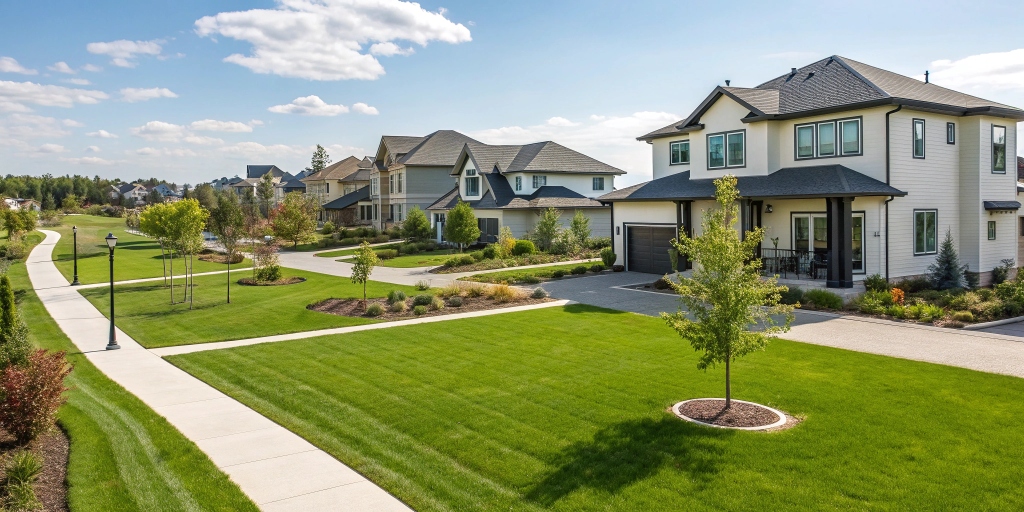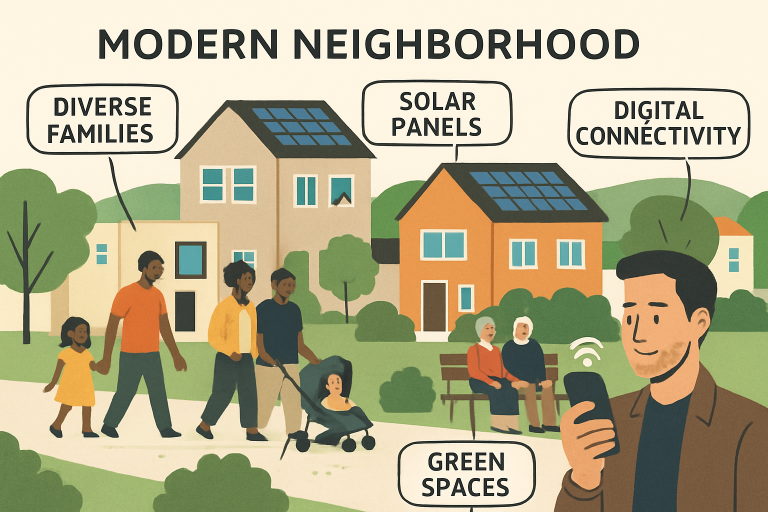
Modern Community Association Living Trends for Homeowners
Key Takeaways
- U.S. community associations are projected to add thousands of new associations annually, shaping future housing preferences.
- Technology-driven management tools and resident engagement platforms redefine how associations interact and operate.
- Eco-conscious initiatives are integral for communities seeking to reduce environmental impact and increase appeal to modern buyers.
- The demographic makeup of homeowners is shifting, impacting amenity choices and association programming.
- Resilient, wellness-focused architecture is helping communities meet evolving needs and withstand environmental challenges.
Community associations have become the foundation of modern neighborhoods, providing homes, a blend of amenities, structured management, and a cohesive sense of belonging. Homeowners are experiencing a shift in how their communities operate, with contemporary trends redefining the expectations and benefits of association living. As these associations evolve, those seeking expert guidance in managing their communities turn to professionals like HOA Management San Jose to ensure their neighborhoods thrive in today’s ever-changing landscape.
Community association living is increasingly popular due to economic and generational changes. It offers efficient shared services, amenities, and proactive governance. Key trends include modernization through management software, sustainability initiatives, and adaptable designs, which enhance residents’ experiences and protect property values. Shifting demographics, particularly Millennials, Gen Z, and Baby Boomers, influence associations to prioritize inclusivity and innovative development to cater to diverse homeowner needs.

Steady Growth in Community Associations
Community associations are growing steadily across the country. Projections for 2025 predict the creation of 3,000 to 4,000 new condominium and homeowners associations, bringing the total to about 373,000 associations that serve 77 million Americans. This growth is mainly due to the need for collective management, better amenities, and privatized community services—factors that make these neighborhoods more attractive and easier to maintain. The advantages provided by these associations continue to boost their popularity.
Digital Transformation Enhancing Operations
Technology is fundamentally changing how associations are managed. With the adoption of advanced management software, including cloud-based resident portals, communities are streamlining everything from communication and fee processing to maintenance requests and amenity bookings. These innovations reduce administrative overhead and improve satisfaction among residents, who value transparency, convenience, and prompt resolutions to their needs. Digital transformation makes it easier for associations to keep pace with operational demands and resident expectations.
Emphasis on Sustainability and Environmental Responsibility
Sustainability is at the forefront of community associations’ agendas. Today’s homeowners want eco-friendly living environments, and communities are responding by prioritizing energy-efficient upgrades such as solar panels, LED lighting, recycling programs, and electric vehicle charging stations. These green efforts not only lower community operating costs but also appeal to environmentally conscious residents, becoming a market differentiator in new and established association developments.
Demographic Shifts Influencing Community Dynamics
The resident profile within community associations is evolving as different age groups seek homes that reflect their values and lifestyles. Now entering the housing market, millennials and Gen Z buyers look for digital capabilities and tech-integrated amenities. At the same time, Baby Boomers are seeking homes with better accessibility and safety features. To cater to this diverse spectrum, associations invest in recreational facilities, dog parks, multigenerational clubhouses, and inclusive social programming that strengthens neighborhood bonds.
Architectural Trends Focusing on Resilience and Wellness
Contemporary architectural trends within associations are prioritizing safety, durability, and wellness. Homes are designed with simplified exteriors and durable materials to minimize upkeep and withstand extreme weather. Accessory dwelling units (ADUs) are increasingly popular, providing flexible living spaces for multigenerational families. Green spaces, walking trails, and community gardens are being incorporated to foster physical activity and well-being, ensuring residents can access privacy and shared outdoor experiences within their neighborhoods.
High Levels of Homeowner Satisfaction
Living in a well-managed community association correlates with happier homeowners. According to recent surveys, 89% of residents rate their experience as “very good” or “good,” underscoring the advantages of maintenance-free living, enhanced security, and consistently well-managed communal spaces. This strong satisfaction rate demonstrates the success of modern association living in creating neighborhoods where residents feel valued, safe, and connected.
Conclusion
Community associations are not only keeping pace with the contemporary housing market but actively shaping it. The move toward digital transformation, sustainability, inclusive amenities, and resilient architecture is elevating the quality of life for association residents. As associations continue to grow and innovate, they reinforce their status as the preferred housing model for diverse and dynamic populations, ensuring vibrant and adaptable communities for the future.


Average Rating